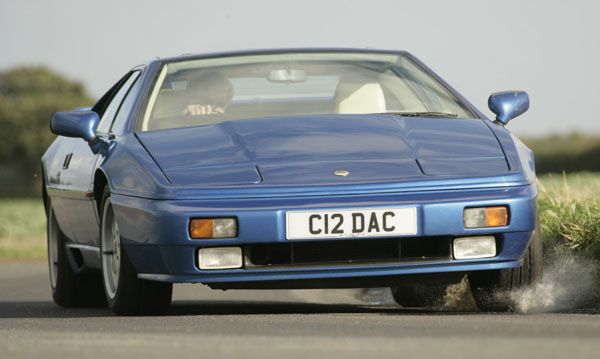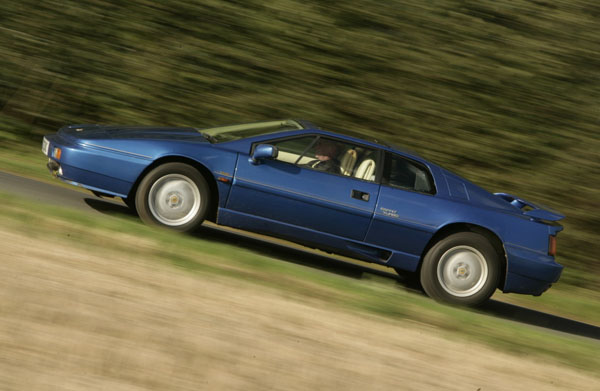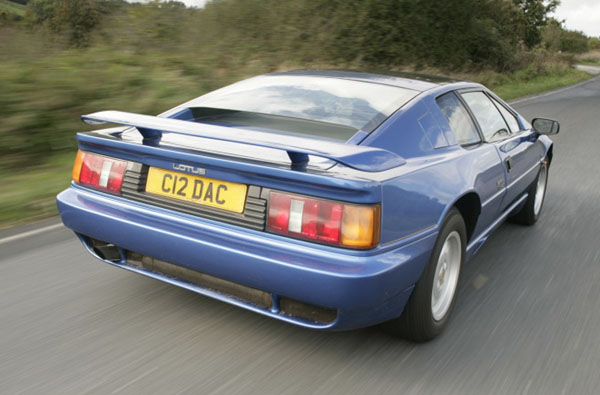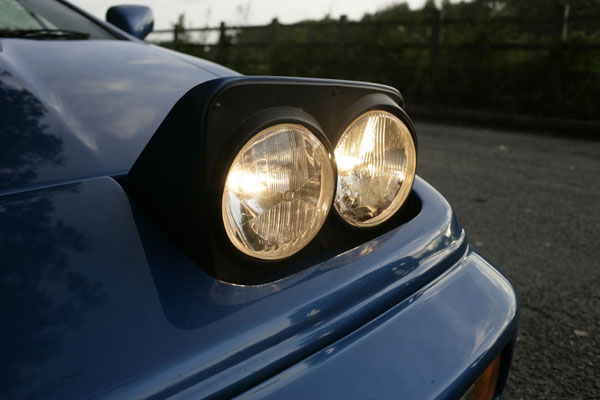
Classic & Sportscar Magazine - Smooth Operator
It might not have the edge in looks on Giugiaro's original Lotus Esprit but, Peter Stevens' softer successor is a more practical proposition
Classic and Sports Car, November 2005 words by Martin Buckley, photography by Tony Baker
History will probably judge the original Ital Design Esprit, current for 13 years, to be visually the most enduring mid-engined Lotus. It is bolder, sharper and somehow more authentic than Peter Stevens' revised, soft-edged late 80s version. Hindsight and prespective are beginning to play that cruel trick of making the older car seem younger and fresher.
Rewind to 1987 and it is easier to appreciate the rationale behind Stevens' revised Esprit, codenamed X180. The origami school of styling was rapidly falling out of favour and the cars that had once spearheaded the fashion did not always lead themselves to being reinvented in the new soft-focus idiom. For proof compare William Towns' original uncompromising chiselled Lagonada with the revised Series II car.
Equally it is easy to forget how overdue the new Esprit seemed in 1987 and how skilfully Stevens had retained the essence of the original while giving the car a more contemporary flavour. The new Esprit - in Turbo form the world's fastest four-cylinder car - was created to two years on a modest £2 million budget. It was broadly a carry-over from the old car with the 215bhp HC Turbo on 172bhp normally aspirated engine, both running Dell'ortos. The main mechanical revision was a Renault GTA/25 transaxle replacing the old CitroŽn SM type.
From a styling point of view, Steven's brief was to maintain the A-pillar angle, window frames and the car's width (although he would have like to reduce it) and make the new Esprit easier to see out of, with a more comfortable and freshened-up the cabin. His idea was to develop the surfaces and shut lines and make it seem 'less like a collection of panels' while making a dramatic improvement to the drag factor but without compromising stability. In turbo form, with its skirts and spoilers, the old Esprit recorded an absurdly high 0.40cd although the factory claimed a much lower figure.
Perhaps even more significant was the fact that the new car, making extensive use of Kevlar, was 24 per cent stiffer than the old Esprit and easily passed Federal rollover test requirements. Paul Clugsten of UK Sports Cars near Canterbury bought his first Lotus - an Elan +2S - 30 years ago and has been enthralled by the marque ever since. He maintains that, with this generation of Esprit, Lotus finally shook off its reputation for kit-car fragility: 'Build quality started getting better from much earlier - probably 1984 or '85. So the worst would be an early Esprit Turbo - you'd be forever messing about with one of those."
Unfortunately our scalded cat had a cantankerous disposition as we pointed out in our test. Seems there was a bit to much Formula 1 engine to its turbocharged inline 4 cylinder, and while power was adequate, we found that"you just won't win many stoplight drag races without a flurry of revs and a willingness to abuse the clutch." As for driveability, we wondered "why the cheapest fuel-injected cars now available start and idle perfectly, while the costly Lotus has fuel-metering problems." Disparaging words and not what Hethel wanted to hear. So the factory made some more changes to the engine mostly, but in other areas as well. The result is the 1989 Esprit Turbo, a much improved automobile that is still a Lotus.
About the engine: Although such fundamentals as bore, stroke, compression ratio and the like are the same, the fuel - injected system, ignition, turbocharger and exhaust system are new or revised. Consequently, horsepower is up from 215bhp at 6250 rpm to 228 bhp at 6500 rpm and so is the torque, from 192 lb/ft at 5000rpm to 218 at 4000. Details abound. Suffice to say that the induction system now has tuned runners with individual throttles for each cylinder, there's a new fuel management system, who's Electronci Control Module now senses 14 parameters, the electronic twin-coil ignition fires the spark plugs directly, the turbocharger has a two stage boost control and a boost modulation feature (for faster throttle response), there's a knock sensor and, finally, the exhaust system has a new catalyst and muffler (for reduced back pressure). One morething: There's a larger (235 mm) clutch to accommodate the increase in horsepower and torque.
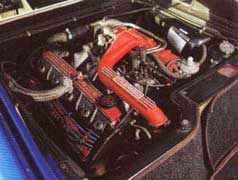
Also, there's a new 5 speed with taller final drive and revised gearbox ratios (1st is noticeably lower, 3rd, 4th and 5th are much closer together) tailored to the increases in horse power and torque. Because of the redesigned transaxle, the Esprit Turbo's rear inboard brakes have been moved outboard. By now you've undoubtedly surmised that all of this should effect performance and it does: The 1989 Esprit Turbo is both quicker and faster,just how much we'll see in a moment.
Although the basic shape was built over a long period, the market is not awash with cars: 'People only sell them because they acquire families or need a new kitchen or are moving aboard, but they are generally reluctant to part with them. Chances are they will come back in 10 or 15 years' time. We sell a lot to guys in their 50s and to people in their 30s who work in the City.' Slicing down into the cabin, nostrils assailed by the leather, this car - a 1989 Turbo with SE wing, formerly owned by a Learjet pilot - feels a more together vehicle than any previous Lotus. It's a credible alternative to German and Italian supercars, rather than something that feels as if it collided with a branch of Halfords. It pulls off this trick,yet also manages to feel peculiarly Lotus-like at is core.
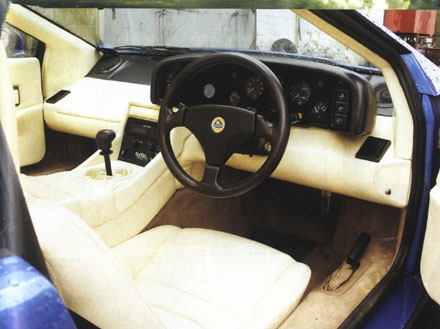
The cabin is not without its problems, however. Settling into the seat, hemmed in between the chunky central spine and door armrest, the pedals feel off-centre and close together, so it's easy to press brake and clutch at once. Your head feels close to the steeply raked windscreen pillar and there are distracting reflections in the glass from the demisting vents. The tops of the humdrum-looking instruments are slightly obscured by the top of the think steering wheel. To the rear, the view through the shallow window is partly obscured by the spoiler but it is a much more airy car than its predecessor. That supple leather gives the interior a fairly upmarket flavour, slightly under-mined by the inevitable Morris Marina door handles. Lots of fiddly separate keys for doors, ignition and boot still give it that '70s specialist car feel too. There's a choke knob hidden below the steering wheel but it is more for reassurance than any practical purpose.
Dab the throttle a couple of times and the engine cranks over enthusiastically and fires quickly. It sounds intriguing rather than expensively exotic: the rustle and chatter of four cams and 16 valves and a flat, hollow exhaust note.
Manoeuvring around, the Esprit feels wide and cumbersome at low speeds, with fairly heavy steering, and quickly gets warm inside from the sun (this one has the removeable glass roof panel) rather than the engine which seems well isolated in terms of noise and heat soak. As soon as speed picks up you realise the Esprit doesn't really need power steering. In all respects it is not a heavyweight to drive, with a surprisingly light, well-cushioned clutch although second gear demands that you fully depress the pedal. The engine is smooth and flexible: slightly soft throttle response at speeds below 2500rpm - when the turbocharger begins to work hard - is the only giveaway to its state of aspiration. Air flows smoothly over the shell, with a modest whistle around the driver's door seal and a relaxed gait that must make the Esprit a surprisingly mature long-distance car. The Renault five-speed gearbox doesn't do anything particularly wrong, but lacks the well-judged finesse of the Esprit's other controls. It is rubbery, long in throw and undistinguished.
But the Esprit is very fast. Using 7000rpm in second will take you almost to the motorway speed limit, third to nearly 100mph. You could trash your licence even before you'd got off the slip road. Using far fewer revs, the 153mph Esprit is a devastating overtaking tool in third and fourth. The turbo spools up with minimal delay as the car lunges past slower vehicles. Your head and upper body rock back and forward involuntarily with the wastegate's fluttering - dumping excess compressed air - as you lift between gears. That a mere four-cylinder engine can move what is quite a substantial car with such smoothly relentless urge is still amazing nearly 20 years on, even if it ultimately lacks the aural stimulation of its multi-cylindered contemporaries.
The chassis is hugely accomplished. Slung low beside the backbone, with the road rushing towards the plunging and invisible bonnet line, your impression is one of total stability with a willingness to change direction via sharp, responsive steering at odds with what three turns lock-to-lock might suggest. This, combined with a supple ride, a lack of body movement and the ability to generate huge grip on 60-profile tyres which even in 1987, weren't that low an aspect ratio, is the essence of what the Esprit Turbo - or indeed any Esprit - is all about. Steer it in the appropriate direction - almost a matter of telepathy - and the Esprit merely whips you neutrally through the curve, seemingly an extension of your own senses; thrilling but entirely within itself as it rushes towards the next corner with a unbridled surge of energy. Smooth or bumpy, those supple springs and the firm damping don't allow the road surface to compromise grip, leaving the driver free to savour the bite of the front end as it eagerly turns in and the grip of the rear wheels as another blast of power fires you out the other side.
It's easy to see why these cars, so fast and so capable, retain such a following. Clugston does a healthy trade in them and, while the Giugiaro shape retains a hardcore purist following, it's the later car most buyers are after. "It's just more usable," he explains. "It's got a galvanised chassis, Nikasil liners... you just keep your eye on all the levels and gauges and get it serviced every six months or 6,000 miles. It's qute a practical car to use like you would a Porsche - in fact, they are better off used reguarly than tucked up in a damp garage getting rusty discs or seized calipers, wastegates and clutches." But a full history is critical: a stamped service book with bills to go with it. "Service history tends to be a combination of specialists and main agents," says Clugston, "actually, most main agents would be scratching their heads if they had to look after an Esprit - they are more used to the Elise these days. You're better off with a specialist; there are not that many to choose from." The secret of a long engine life is to warm them up sympathetically and cool them down properly: "With an alloy block and an iron exhaust manifold, the materials heat up and cool down at different rates, so don't just switch off after a hard run - let them tick over for 30 seconds."
Racks usually need replacing after 45-50,000 miles when the steering gets a bit notchy. "They gained power steering in 1993 on the S4 which was a revelation," adds Clugston, who, as a young man, got himself invited to the launch of the original Esprit Turbo. "As the years went on, from the late '70s, you could feel the weight going up." You might come across a problem selecting gears on a hot day. This is so-called 'red hose syndrome' when the rubber hydraulic pipe that operates the clutch slave cylinder ballons and doesn't allow the clutch to fully disengage. "I've had a spate of them this summer," says Clugston, "the acknowledged modification is to fit a braided hose that doesn't expand."
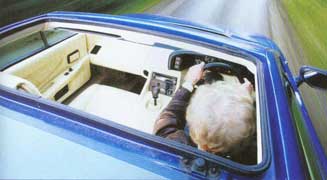
Racks usually need replacing after 45-50,000 miles when the steering gets a bit notchy. "They gained power steering in 1993 on the S4 which was a revelation," adds Clugston, who, as a young man, got himself invited to the launch of the original Esprit Turbo. "As the years went on, from the late '70s, you could feel the weight going up." You might come across a problem selecting gears on a hot day. This is so-called 'red hose syndrome' when the rubber hydraulic pipe that operates the clutch slave cylinder ballons and doesn't allow the clutch to fully disengage. "I've had a spate of them this summer," says Clugston, "the acknowledged modification is to fit a braided hose that doesn't expand."
So it wouldn't do to judge the Stevens car too harshly, even if you are a dyed-in-the-wool '70s man. The last model from the Lotus supercar era - the firm is now following a rather less ambitious path with the compact Elise - it is going through a middle-aged menopausal period. If its '70s progenitor seems to come from the cheesy world of tinfoil catsuits and early digital watches - it could have been knocked-up as a prop for an episode of UFO - then its late '80s successor suffers because it's harder to find a cultural hook to hang it from. That doesn't mean it's not a great car though.
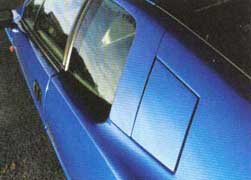
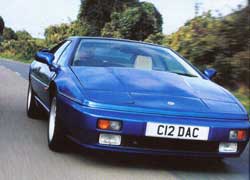
Lotus Esprit
Engine all-ally dohc 2174cc 'four', with twin Dell'orto carbs; multipoint injection from '89 Max power 215bhp @ 6000rpm
Max tourque 220lb ft @ 4250rpm Transmission five-speed Renault UN1-16
Suspension: front double wishbones, coil springs, telescopic dampers, anti-roll bar rear upper and lower transverse links, radius arms, coil springs, telescopic dampers, anti-roll bar
Steering rack and pinion
Brakes Toyota vented discs front, Bendix solid discs rear, with servo; dual circuit, split front:rear
Lenght 4331mm
Width 1860mm
Height 1149mm
Weight 1267kg 0-60mph 5.1 secs
Top Speed 153mph
Price New £28,900
Now £10-15,000
*Note: This is an extract from Classic & Sportscar Magazine. To see the full article, please contact Classic & Sportscar Magazine for a back issue of the December 2005 magazine.

